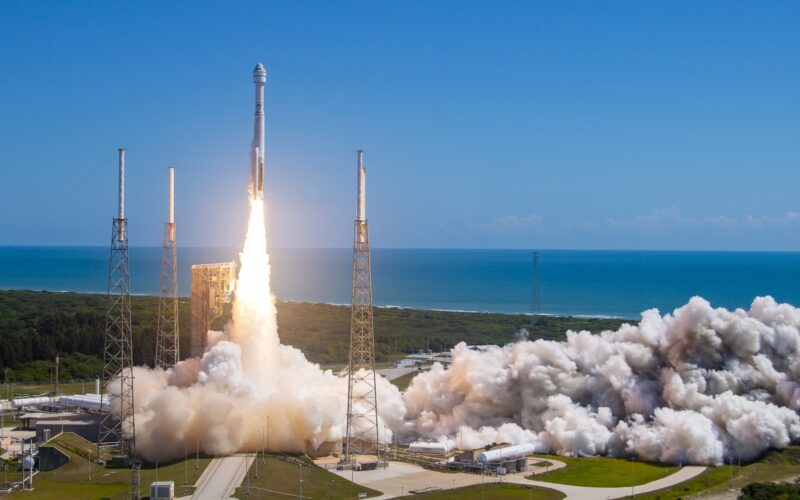The first-ever crewed Boeing Starliner has successfully launched into space. However, celebrations have been dampened by the discovery of new helium leaks onboard the spacecraft as it travels to the International Space Station (ISS).
The United Launch Alliance (ULA) Atlas V rocket lifted off from Cape Canaveral Space Force Station, Florida, on June 5, 2024, at 10:52 local time, with NASA astronauts Barry Wilmore and Sunita Williams strapped inside Boeing’s CST-100 Starliner.
After a series of frustrating delays in recent weeks, there was understandably huge relief among all those involved in the mammoth project but around 12 hours into the mission NASA confirmed that three helium leaks had been detected on board Starliner.
The space agency said that one of the leaks had been discussed before launch and it was decided that the mission was safe to proceed with the crew free from danger.
The #Starliner crew continues to make their way to the @Space_Station and are in a sleep period. Teams have identified three helium leaks on the spacecraft. One of these was previously discussed before flight along with a management plan. The other two are new since the…
— NASA's Johnson Space Center (@NASA_Johnson) June 6, 2024
“The other two are new since the spacecraft arrived on orbit. Two of the affected helium valves have been closed and the spacecraft remains stable,” NASA said in a statement on social media.
According to CNN, a conversation between mission control and the astronauts regarding the new leaks was recorded on NASA’s live broadcast. NASA can be heard instructing the two astronauts to shut down two valves.
“We have some issues to watch overnight when in regards to the helium leaks that was just brought up, and we have a lot of smart people down here on the ground that are going to take a look at this stuff and keep an eye on it, but the vehicle is in a configuration right now where they’re safe to fly,” Boeing Aerospace Engineer Brandon Burroughs said on the NASA broadcast.
The ISS has since said that Starliner "remains on track for a docking at 12:15pm ET today to the station despite helium leaks reported on the spacecraft".We have liftoff!
— NASA's Johnson Space Center (@NASA_Johnson) June 5, 2024
History is made as @NASA_Astronauts Butch Wilmore & Suni Williams become the first people to fly aboard a #Starliner spacecraft as part of @NASA’s @BoeingSpace Crew Flight Test (CFT) mission to the @Space_Station! pic.twitter.com/uBaIjzWov3
Barry Wilmore and Sunita Williams expected to spend around a week on board before returning to Earth.

